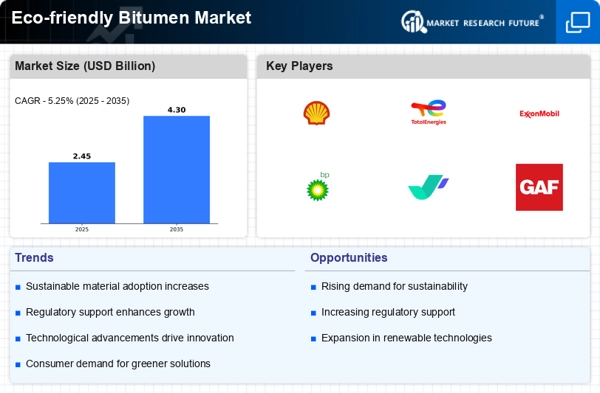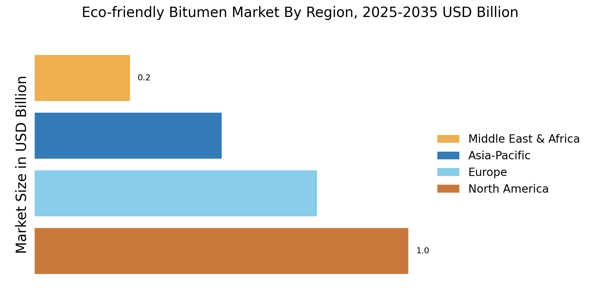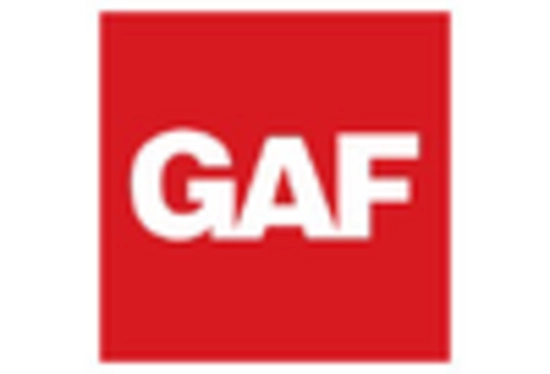Rising Environmental Awareness
The increasing awareness regarding environmental issues is a pivotal driver for the Eco-friendly Bitumen Market. Consumers and businesses alike are becoming more conscious of their carbon footprints and the ecological impact of their choices. This shift in mindset has led to a growing demand for sustainable construction materials, including eco-friendly bitumen. According to recent data, the market for eco-friendly construction materials is projected to grow at a compound annual growth rate of approximately 8% over the next five years. This trend suggests that the Eco-friendly Bitumen Market is likely to experience significant growth as stakeholders prioritize sustainability in their projects.
Growing Infrastructure Development
The ongoing infrastructure development projects across various regions are a substantial driver for the Eco-friendly Bitumen Market. As urbanization accelerates, the demand for sustainable road construction materials is on the rise. Governments and private sectors are increasingly focusing on green building practices, which include the use of eco-friendly bitumen. Recent reports indicate that infrastructure spending is expected to reach trillions of dollars in the coming years, with a notable portion allocated to sustainable materials. This trend suggests that the Eco-friendly Bitumen Market is poised for growth as stakeholders seek to align with sustainable development goals.
Government Regulations and Incentives
Government regulations aimed at reducing carbon emissions and promoting sustainable practices are crucial drivers for the Eco-friendly Bitumen Market. Many countries have implemented stringent regulations that mandate the use of environmentally friendly materials in construction and road maintenance. Additionally, various incentives, such as tax breaks and subsidies for using sustainable materials, further encourage the adoption of eco-friendly bitumen. For instance, certain regions have reported a 15% increase in the use of eco-friendly materials due to such policies. This regulatory landscape is expected to bolster the Eco-friendly Bitumen Market as compliance becomes a necessity for construction firms.
Technological Innovations in Production
Technological advancements in the production of eco-friendly bitumen are significantly influencing the Eco-friendly Bitumen Market. Innovations such as the development of bio-based bitumen and the use of recycled materials in bitumen production are gaining traction. These technologies not only enhance the sustainability of bitumen but also improve its performance characteristics. For example, the integration of recycled plastics into bitumen has been shown to enhance durability while reducing environmental impact. As these technologies continue to evolve, they are likely to attract more investment and interest in the Eco-friendly Bitumen Market, potentially leading to a market expansion.
Consumer Preference for Sustainable Products
The shift in consumer preferences towards sustainable products is a notable driver for the Eco-friendly Bitumen Market. As consumers become more environmentally conscious, they are actively seeking products that align with their values. This trend is particularly evident in the construction sector, where clients are increasingly demanding eco-friendly materials for their projects. Market Research Future indicates that a significant percentage of consumers are willing to pay a premium for sustainable options, which is likely to encourage manufacturers to invest in eco-friendly bitumen solutions. This evolving consumer landscape is expected to propel the Eco-friendly Bitumen Market forward as demand for sustainable construction materials continues to rise.


















Leave a Comment